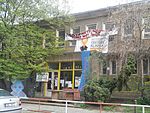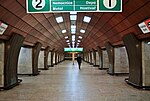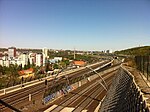Czechoslovak government-in-exile

The Czechoslovak government-in-exile, sometimes styled officially as the Provisional Government of Czechoslovakia (Czech: Prozatímní vláda Československa, Slovak: Dočasná vláda Československa), was an informal title conferred upon the Czechoslovak National Liberation Committee (Výbor Československého Národního Osvobození, Československý Výbor Národného Oslobodenia), initially by British diplomatic recognition. The name came to be used by other World War II Allies as they subsequently recognised it. The committee was originally created by the former Czechoslovak President, Edvard Beneš in Paris, France, in October 1939. Unsuccessful negotiations with France for diplomatic status, as well as the impending Nazi occupation of France, forced the committee to withdraw to London in 1940. The Czechoslovak Government-in-Exile offices were at various locations in London but mainly at a building called Fursecroft. It was regarded as the legitimate government for Czechoslovakia throughout the Second World War by the Allies. A specifically anti-Fascist government, it sought to reverse the Munich Agreement and the subsequent German occupation of Czechoslovakia, and to return the Republic to its 1937 boundaries. As such it was ultimately considered, by those countries that recognized it, the legal continuation of the First Czechoslovak Republic.
Excerpt from the Wikipedia article Czechoslovak government-in-exile (License: CC BY-SA 3.0, Authors, Images).Czechoslovak government-in-exile
Olšanská, Prague Žižkov
Geographical coordinates (GPS) Address Nearby Places Show on map
Geographical coordinates (GPS)
| Latitude | Longitude |
|---|---|
| N 50.0833 ° | E 14.4667 ° |
Address
Residence Garden Towers
Olšanská
130 00 Prague, Žižkov
Prague, Czechia
Open on Google Maps










